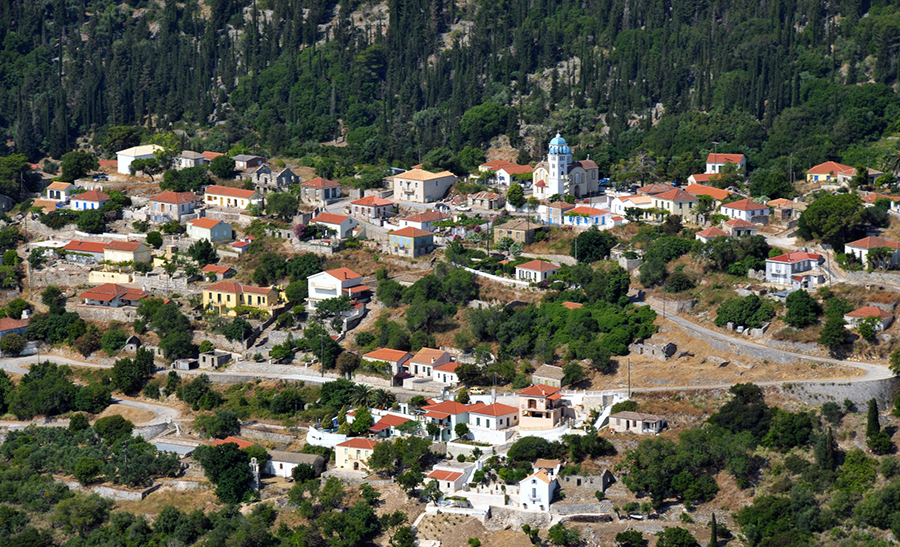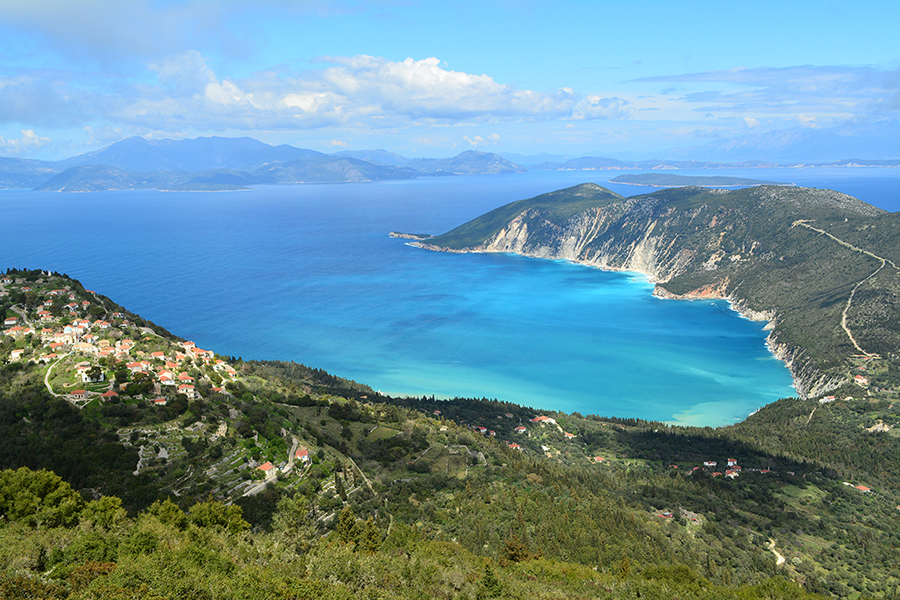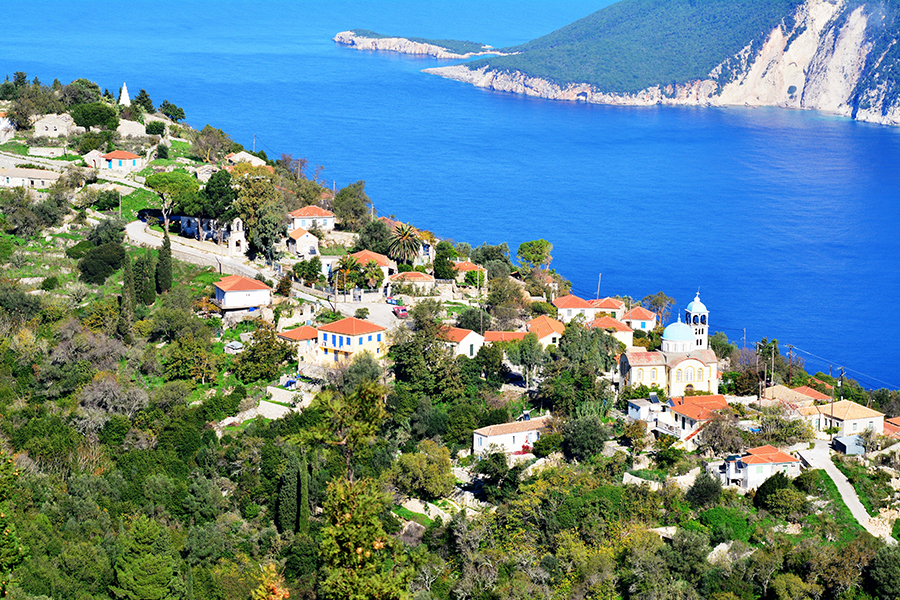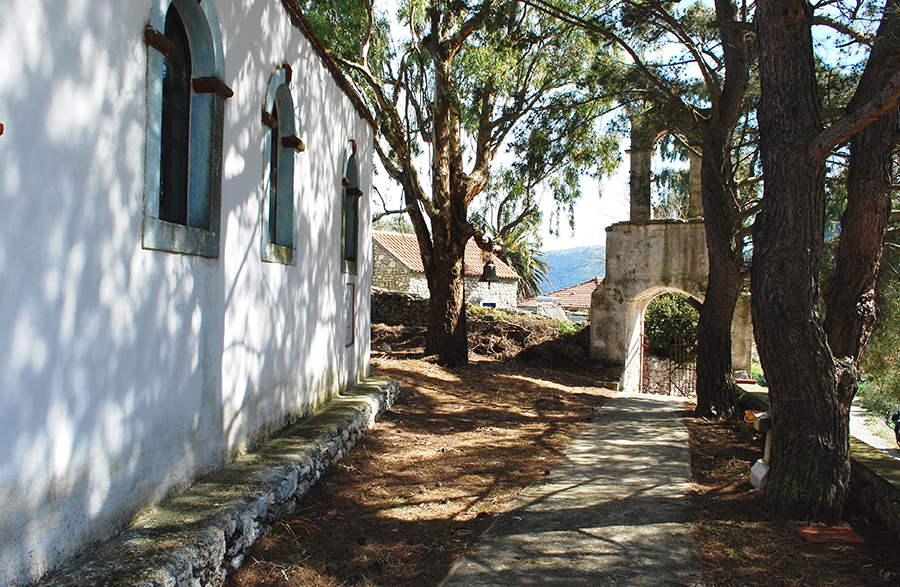Home > Were to stay > Villages > Exogi
Exogi is the northern-most village of the island. It is built at an altitude of 340 meters on the island’s north-western peninsula and is 22 km away from Vathy. It was founded by the Venetians in the early 16th century and was Ithaca’s third settlement at that time. It was, however, significant due to the safety that its position provided from pirates and its view over the surrounding areas and sea.
Exogi is a very beautiful and picturesque village that offers the visitor tranquility, a special view and direct contact with nature. Today it has 45 permanent inhabitants while in the middle of the 18th century its inhabitants numbered around 1400. It had substantial commercial activity since it produced flax, oil, wine, and raisins. These products were shipped-out from the harbour of Frikes. The land around the village was terraced, creating the ‘hanging gardens’ of Exogi. Thus, no space was thus left uncultivated.


One reaches Exogi by following the road from Stavros to Platreithias. At its highest point, the road veers left and continues uphill towards Exogi. The landscape that unfolds with the ascent, is particularly impressive. The view of the settlement of Platreithias and the sea in the distance with the nearby islands is breathtaking. It’s worth stopping on the flat area that is formed at the ‘Megali Volta’. Here one can admire the view and take excellent photos with the Gulf of Afales and the villages at the foot of the mountain as background. A few meters further, one arrives at the central square of Exogi next to the Church of St Marina. Looking from the square towards the west, one notices the remains of the old village within the gorge that once hid the settlement from the sea because of the fear of pirates. One can also see the terraced slopes that were used for the cultivation of raisins. On July 17 every year, the day on which St Marina’s memory is celebrated, a large festival takes place on the village square, attracting large numbers of people.
Advancing further, one reaches the Church of St Nicholas. Below the flat area in front of the Church are the pyramids of Exogi, built in the 1930s by Ioannis Papadopoulos (John Papas). He was an eccentric millionaire that died without heirs, leaving his wealth to 46 branches of the Red Cross worldwide and appointing the Greek Red Cross as administrator. Visiting Ithaca every now-and-again, he built two pyramids. The southern pyramid is the grave of his parents while the other is a masonic symbol. On the northern side is his grave. Around his grave and in the surrounding area, there are 33 cryptic markings or signs.
Exogi’s attractions don’t stop here! From the flat area in front of the Church, begins the road that leads to what was once the monastery at ‘Pernarakia’. From there the view is incredible and the sunset magical. This is the point from which one can view almost all the villages of Northern Ithaca, the nearby islands, the Aetolokarnania region of the mainland and Kefallonia in the West.


Nature-lovers that enjoy hiking can reach Exogi using the footpath that begins from ‘Gefyri’, the bridge at the center of Platreithias. This path passes through the archaeological site of St Athanasios that contains the Odyssean palace and continues upward, through lush and dense vegetation, to Exogi. It is suggested that one descends using the only path that leads to the spring of Kalamos. These paths were the old roads of the beasts of burden and they are well preserved to this day. It would be an omission if we didn’t mention the wonderful footpath that begins 20 meters before we enter the village, on the left, and leads to the location of Rousano. The vegetation that is almost tropical in density, the view of the village of Stavros and the beach of Polis is unique and leaves the visitor speechless.






